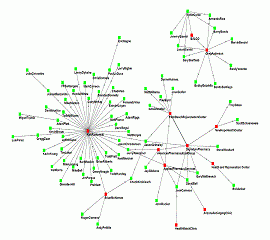 Several people I know from the traceability solution provider community like to tout the similarities between the food supply chain and the pharmaceutical supply chain. They see similar track and trace regulation in the futures of both chains. After all, both supply chains are regulated by the same agency (FDA, although food is also regulated by the USDA) and they see them as having similar problems. But I don’t buy all that. My friends see the use of common tools (their products, of course) and I might give them that, but these two problems only seem similar on the surface and so, if track and trace regulation is needed for both, the two regulations ought to have only high-level similarities.
Several people I know from the traceability solution provider community like to tout the similarities between the food supply chain and the pharmaceutical supply chain. They see similar track and trace regulation in the futures of both chains. After all, both supply chains are regulated by the same agency (FDA, although food is also regulated by the USDA) and they see them as having similar problems. But I don’t buy all that. My friends see the use of common tools (their products, of course) and I might give them that, but these two problems only seem similar on the surface and so, if track and trace regulation is needed for both, the two regulations ought to have only high-level similarities.
THE FOOD SUPPLY CHAIN
The increasing frequency of the scariest problems in the food supply chain are related to accidents—like unintended contact with surfaces or organic matter that contaminate the food with nasty things like E. coli or salmonella—or food that has spoiled as the result of improper storage somewhere in the supply chain—like refrigerators or freezers that aren’t doing their job. Consumers would benefit from the use of food track and trace in situations like these only when the contamination or spoilage isn’t detected until after the product is split up and distributed down multiple paths. The track and trace system would improve the speed of the recall and the confidence in its completeness.
Generally, food is distributed to retail outlets inside containers that are packed by the manufacturer or processor. I’m not an expert here so those of you who are, please correct me, but I don’t think food distributors normally break down cases and ship individual saleable units to retailers. I think they normally ship full cases, bins and pallets. For this reason, item-level serialization is not critical to end-to-end track and trace. However, container-level serialization-based track and trace would be a major benefit to this supply chain.
There is one more thing about the food supply chain that I think is significant for this discussion. Many of the trading partners at the start of the supply chain are small, independent and technically unsophisticated. Most of the trading partners at the end of the supply chain are just the opposite: large corporations with big IT budgets.
THE PHARMACEUTICAL SUPPLY CHAIN
On the other hand, the scariest problems in the pharmaceutical supply chain Continue reading The Deputized Supply Chain →
![]() Last Friday, the FDA published the long awaited guidance on their Standardized Numeric Identifier (SNI) for prescription drug packages. This was right on time since the FDA Amendments Act of 2007 gave the agency 30 months to develop a standard for SNI and they published, almost to the day, 30 months later. Well done.
Last Friday, the FDA published the long awaited guidance on their Standardized Numeric Identifier (SNI) for prescription drug packages. This was right on time since the FDA Amendments Act of 2007 gave the agency 30 months to develop a standard for SNI and they published, almost to the day, 30 months later. Well done.





